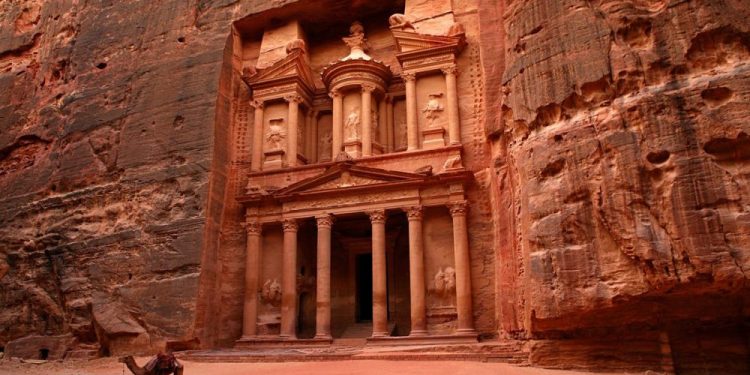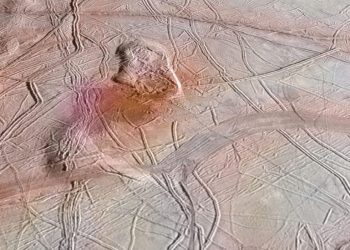The ancient city of Petra, also known as AL-Batra in Arabic, is well known for being carved into the bedrock. Established 300 BC, Petra is an ancient wonder of the world and attracts millions of people every year.
This legendary city carved into the very bedrock is a mystery like no other, and today, in this article, I will take you on a journey and attempt to unravel some of its mysteries.
Who built the Petra?
There is no real evidence who built Petra. Nevertheless, we do know that the ancient Nabataean people were one among several nomadic Beduins who lived in the area.
Petra has been inhabited from as early as 7000 BC. The Nabataeans settled in what would become the capital city of their kingdom, as early as the 4th century BC.
Nabataeans were smart people who invested in Petra’s trading route, which would give them control of the area and considerable revenue.
Petra thrived in the 1st century AD when its famous Al-Khazneh structure – believed to be the mausoleum of Nabataean king Aretas IV – was constructed.
Its population peaked at an estimated 20,000 inhabitants.
Part of the Roman Empire
In the first century BC, the Nabataean kingdom became a client state to the mighty and fast-growing Roman Empire. In 106 AD, Petra lost its independency and felt into the hands of Romans. They annexed Nabataea and renamed it Arabia Petraea.
Petra’s importance began declining when an earthquake in 363 destroyed most of the structures. The rise of naval trading routes had a great impact on Petra’s wealth.
Several Christian churches were built in the Byzantine era in an attempt to bring back population into Petra but with no success.
In the early Islamic era, Petra was abandoned entirely except for nomads who decide to stay in the area, hoping that the city would rise once again and become a flourishing state.
World’s Most Famous Treasury
The main entrance to Petra is called the Al-Khazneh (The Treasury).
To this day, archaeologists still don’t really know why The Treasury was made, nor what its exact purpose was.
Some archeologists think it is the tomb of a Nabataean king. Others believe it was built for safeguarding documents or was maybe used as some sort of a temple.
All we know is that The Treasury was built later when the city was already established and wealthy.
Why is Petra a lost city?
With the rise of maritime trade and new technology development, Petra lost its strategic position in the east.
Without people and trading, this city stared disappearing into the sand. But Petra was only lost for the people of the West.
Nomads who lived in that area knew about this marvel in the sand. The Bedouin tribe, B’ doul, lived and protected Petra from the outside world.
They didn’t want to share the secret of the ancient city with outsiders as they were afraid that new people would come trying to take Petra’s treasure.
This is why they kept the location of the city a secret for many years.
Petra Theater
This city wasn’t just and trading post of the east. After trading ceased, people would go and enjoy the theater that is located around 600 meters from the city’s main entrance.
It was built in the cultural and political apex of the Nabataean kingdom.
Most of the theatre was carved out of the rock, while the main stage and exterior were constructed separately.
Ad Deir or The Monastery
Ad Deir is Petras’s largest monument; it was built around 1st century BC.
The Monastery is one of the most iconic monuments in Petras Archeological Park. It is located high on the hills, northwest of the city center.
In 1991, archeologists found an inscription on the wall near The Monastery. The inscription mentioned The Mrzh of Obodat, an ancient deity.
The word Mrzh’ is interpreted as a private religious group with a limited number of members.
The location of the inscription is too far from the Deir. Still, it may indicate that the entire Deir complex was dedicated to the Nabataean king, Obodas I.
The essential role of Ad Deir is still unknown, and we believe that further excavation could offer us and answer.
Safety of Petra
Being a world wonder, Petra is one of those places you visit and end up remembering for a lifetime.
One of the most prominent ancient locations globally, this city is facing challenges that may affect its condition in the near future.
Sandstone erosion is the biggest threat to Petra now and further weathering could affect the stability of its carvings and structures.
In the past, Petra was already damaged by Flash Floods, which made archeologists and scientists join forces and rebuild the dam systems around this beautiful ancient city.
Rediscovery of Petra
Petra was rediscovered no more than 200 years ago, as the monuments were so well hidden in Jordan’s mountains.
Petra’s location remained a well-guarded secret from the rest of the world and prevailed so for centuries, while only Beduins knew the true location of Petra.
Traveling to Cairo, Swiss explorer Johann Ludwig Burckhardt found the city of Petra in 1812.
His exploration started in 1809. After many rumors about the Lost City, he decided to attempt to enter the city dressed as an Arab with his guide.
His entrance to this Lost City was quiet short as local Beduins were suspicious of his actions towards Petra.
Join the discussion and participate in awesome giveaways in our mobile Telegram group. Join Curiosmos on Telegram Today. t.me/Curiosmos
All sources and references are linked throughout the article. 










